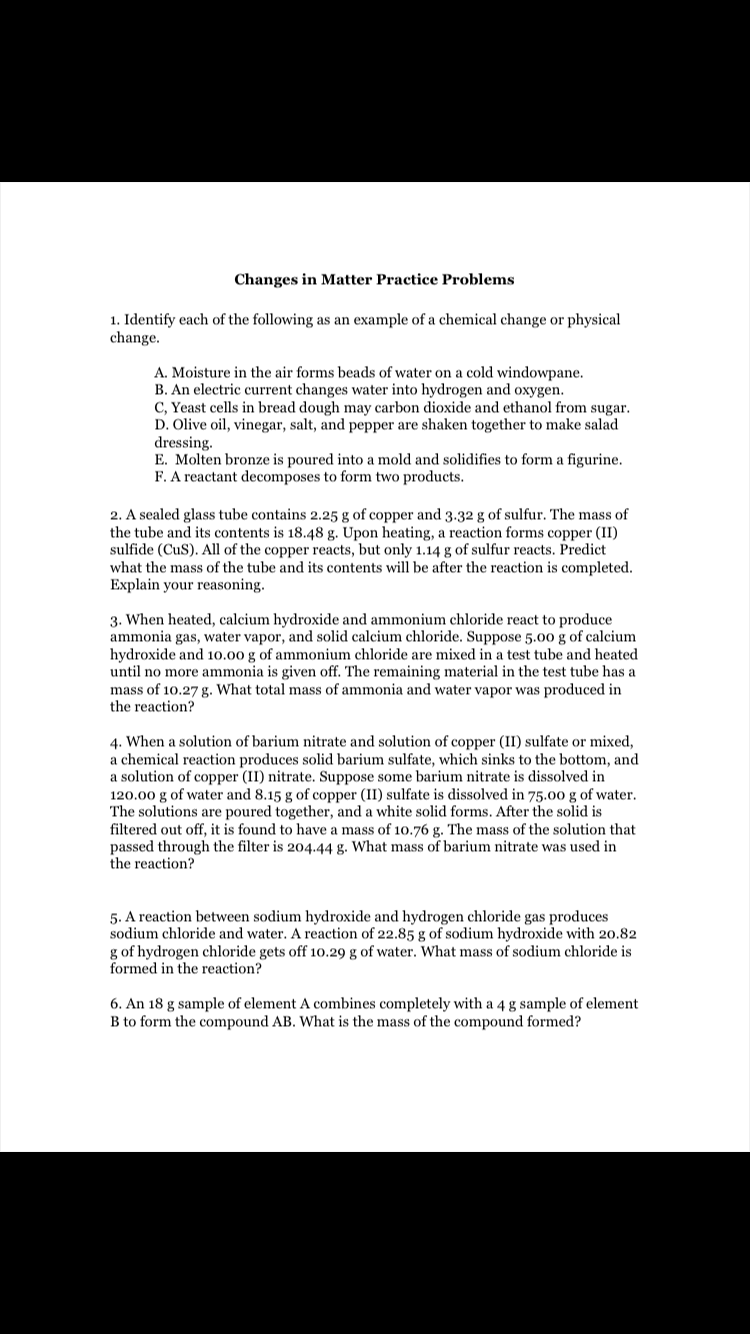1. Identify each of the following as an example of a chemical change or physical change. A. Moisture in the air forms beads of water on a cold windowpane. B. An electric current changes water into hydrogen and oxygen. C, Yeast cells in bread dough may carbon dioxide and ethanol from sugar. D. Olive oil, vinegar, salt, and pepper are shaken together to make salad dressing. E. Molten bronze is poured into a mold and solidifies to form a figurine. F. A reactant decomposes to form two products.
States of Matter
The substance that constitutes everything in the universe is known as matter. Matter comprises atoms which in turn are composed of electrons, protons, and neutrons. Different atoms combine together to give rise to molecules that act as a foundation for all kinds of substances. There are five states of matter based on their energies of attraction, namely solid, liquid, gases, plasma, and BEC (Bose-Einstein condensates).
Chemical Reactions and Equations
When a chemical species is transformed into another chemical species it is said to have undergone a chemical reaction. It consists of breaking existing bonds and forming new bonds by changing the position of electrons. These reactions are best explained using a chemical equation.

Physical changes are defined as changes that involve a change in the display but no change in composition is observed or,
Physical changes occur when the object undergoes a change that does not affect the chemical composition.
Chemical change: It involves the combination of two or more substances to form a new substance and this is called chemical reaction.
Trending now
This is a popular solution!
Step by step
Solved in 3 steps









